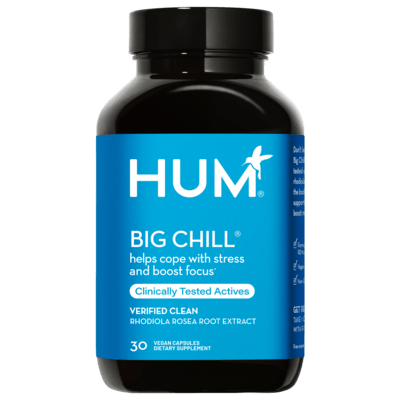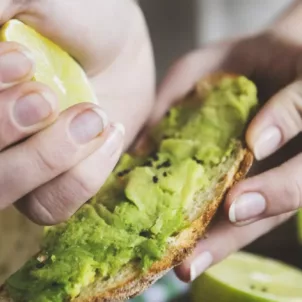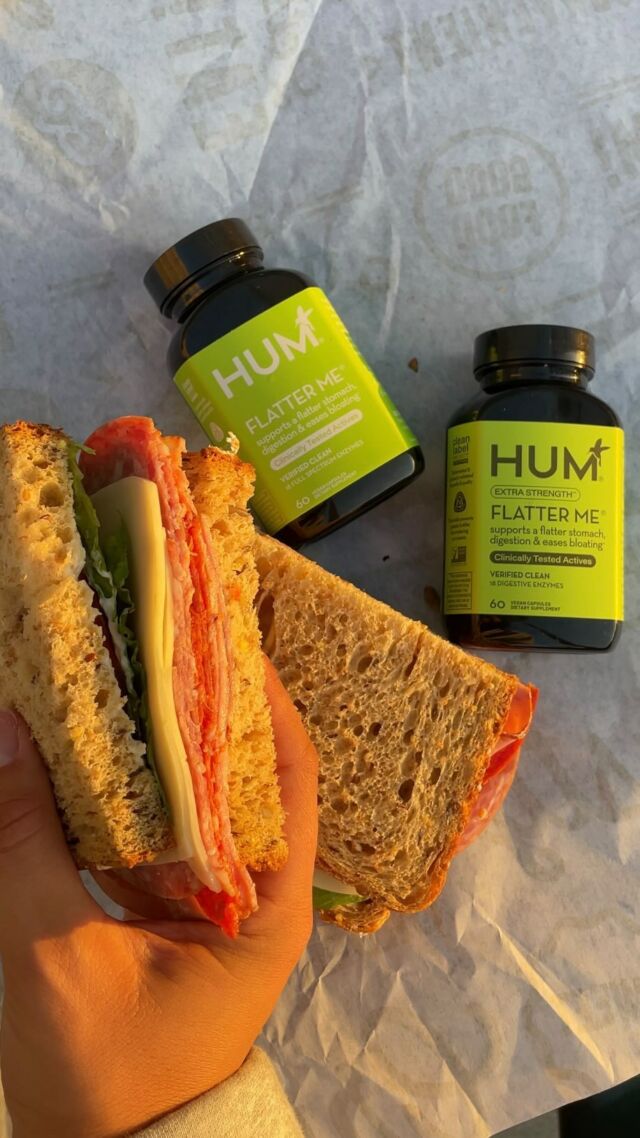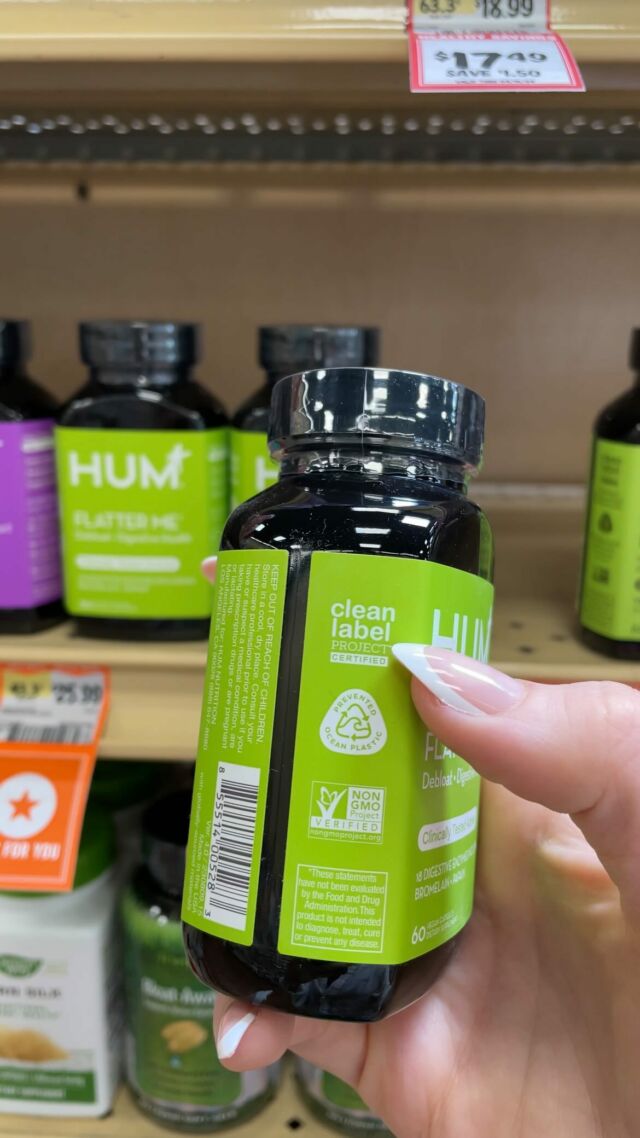Sometimes, the best gift you can give to yourself and your loved ones comes without a price tag. Here, Elizabeth Winkler, MA, LMFT guides us on how to be more present.
With all of the day-to-day distractions we deal with, it can be difficult to enjoy the moment you’re in. Whether you’re thinking of an upcoming work deadline or an upsetting news story, staying present seems nearly impossible these days. But living in the moment can benefit your mental and physical health in extremely impactful ways. Below, a therapist shares how to be more present.
What Does It Mean to Be Present?
Being present means being grounded in the here and now, says Elizabeth Winkler, MA, LMFT, a therapist and certified meditation teacher in Beverly Hills.
Being present means you’re not running through your to-do list in your head, thinking about that vacation you’re taking next month, or dwelling on how your meeting that day didn’t go as well as you’d hoped.
To connect with the present, “simply ponder: How do I know my body is here?” Winkler says. “This is your presence—your awareness. Spiritual teacher Eckhart Tolle calls it the Power of Now, and I call it the power of presence.”
Why Is It Important to Be Present?
You might have your defenses up about the importance of staying present. After all, the past has a major impact on us all. And of course, we have goals and desires (and tasks and to-dos) for the future. So why should we step back, quiet our busy minds, and tune into the immediate environment? Here are two reasons why you should focus on being in the moment.
Presence Is the Foundation for Your Future
“All of life is happening in this present moment,” Winkler says. “So in order for you to make shifts and manifest your dreams, you must be able to access presence. When you perfect this skill, presence becomes your superpower.”
Presence Promotes Positivity
We have anywhere from 6,000 to 70,000 thoughts per day. And no matter where yours fall on this spectrum, it’s still a whole lot—and they tend to accelerate in a ripple effect.
“These thoughts move through your mind like drops of water,” Winkler begins. “We know that where attention goes, energy flows. When we focus our attention on a worrying thought, this drop of water quickly becomes a thought stream, river, or ocean of worry. We find ourselves drowning in this ocean of worries, feeling lost and isolated.”
Essentially, when you learn how to be more present, you’ll be able to make room for more positive thoughts, sensations, and experiences.
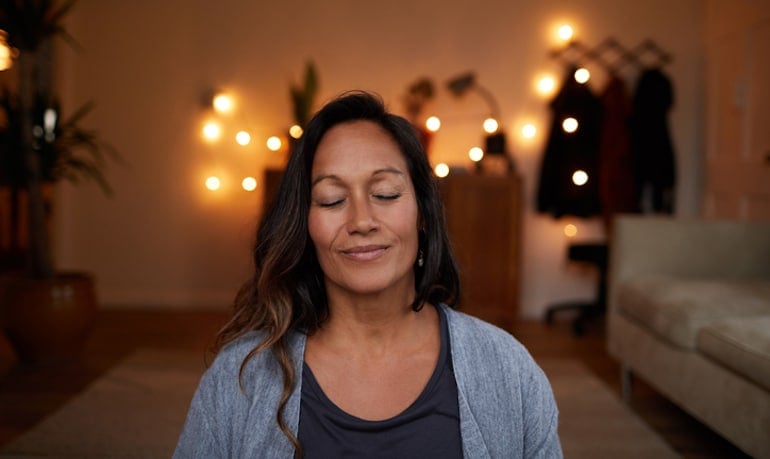
Benefits of Staying Present
Staying present is a major tenet of mindfulness and meditation, both of which have been proven to reduce stress and burnout. Winkler outlines the other benefits of such practices, which include:
- Lower cortisol levels
- Decreased stress
- Better sleep
- More creativity
- Increased focus and attention
- Less reactivity
- A wider capacity to tolerate emotional challenges
“Additionally, through meditation and mindfulness, we become skillful at the power we give to each passing thought and become more grounded in the present moment,” she continues.
Further, she explains that the rewards are closely within reach. “I’ve seen quick, effective, and life-changing results from incorporating mindfulness into my therapeutic process. This is why I call mindfulness the bullet train to freedom.”
How to Be More Present
Ready to reap the calming and fulfilling benefits of being in the moment? Here are 10 simple ways to be more present.
1. Use Your Phone Less
It’s no surprise that smartphones and social media are among the prime sources that distract us from staying present. Searching and scrolling easily become an automatic, passive activity that’s far from the mindfulness needed to experience life off of our screens.
In fact, 2020 data suggests that the average person will spend nearly seven years of their life on social media. With so much time inundated by brand messaging, peering at the lives of others, and refashioning your own image, you’re missing out on the richness of the IRL experience.
Additional research suggests that social media use may be linked to mental health issues such as depression and anxiety.
For that reason, consider spending less time on social media and more time engaged in more rewarding activities.
2. Connect with Your Immediate Surroundings
So what can you do instead to break your social media habit the next time you’d typically reach for your phone? Swap stimulation in favor of simplicity.
“Instead of checking your phone or social media, use this as an opportunity to disconnect with your device and reconnect with the present moment,” Winkler suggests.
“Notice the sky, how the clouds move, or the nature that surrounds us. Noticing our environment helps us to witness our energy flow and can lead to profound states of clarity.”

3. Give Your Undivided Attention to Others
Wondering how else to be more present? Prioritize high-quality human connection.
Being an active, engaged listener is one of the best ways to stay present in the company of others. Give your full attention to the people you’re with, and let other thoughts and tasks wait for later. Don’t know how to be an active listener? Face your body towards the person speaking, make eye contact, don’t interrupt, and respond when prompted. Try these techniques in your next conversation and see how you feel afterward.
4. Avoid Multitasking
While many of us like to multitask to save time and feel productive, the risks might very well outweigh the anticipated rewards.
According to a review by Psychology Today, multitasking doesn’t only distract us—and distraction is the opposite of mindful presence—but can also put us at risk for:
- Increased stress
- Less efficiency
- Poorer memory and emotion regulation
- Reduced relationship satisfaction
- Greater susceptibility to injury
To stay present and prevent these potential pitfalls, devote your attention to one task at a time. After all, when was the last time you benefited from spreading yourself thin?
5. Take More Breaks
You’ll find that stress, fatigue, and burnout are major challenges when learning how to be more present. For that reason, remember to give yourself adequate time to take a step back from your busy schedule whenever you can.
“Our biggest challenge is remembering to take necessary breaks and slow down,” Winkler notes, especially when it comes to our work lives. To rest and regroup, she suggests setting reminders to pause and step away from your work. From there, you’ll be better able to concentrate on your tasks at hand and incorporate mindfulness into your work life.

6. Hit Pause
The next time anger, sadness, or other negative feelings kick in, pause and reflect.
“Being emotionally activated invites a range of feelings,” Winkler shares. Before permitting your base impulses to add insult to injury, momentarily disengage.
“Take a moment to pause in the emotion,” she says. “Notice all that is around you and settle into a calmer state.” From there, you’ll act from a steadier state of mind and can thoughtfully move forward.
7. Breathe More
As basic and automatic as breathing is, mindful breathing is one of the best ways to be more present.
“Breath is our constant companion that places us on the fast track to presence,” Winkler says. “We can handle the daily stressors, emotional triggers, and life’s inevitable curveballs that change the weather within us by incorporating pause practices to reconnect with our breath.”
Whether you do formulaic breathwork (perhaps the Wim Hof Method or box breathing) or a more simple DIY, pacing your inhales and exhales is an excellent practice to encourage living in the present moment.
Winkler particularly recommends still-point breathing, in which you notice the still point (or the gap) at the end of each exhale. “This invites deeper, more intentional modes of breathing, which calms and centers the body and mind,” she says.
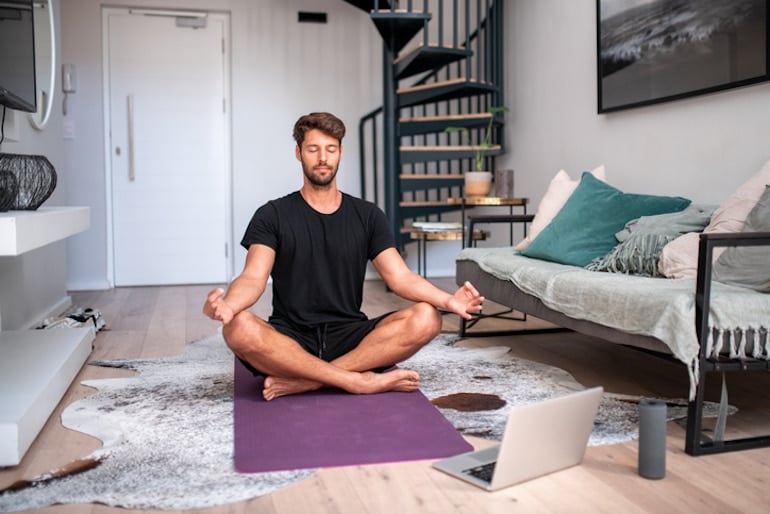
8. Practice Meditation
Meditating is one of the best ways to stay present, be mindful, and otherwise enrich your life.
“Meditation helps calm the mind and center the heart, inviting a state of resilience and, therefore, gratitude,” Winkler notes.
Luckily, if you’re new to meditation techniques or prefer guidance, there’s no shortage of meditation apps to use. Take some time to plug in and slow down. It’ll bring you directly into the present moment.
9. Eat Mindfully
Practicing mindful eating is one of the easiest techniques for staying in the present moment at least a few times each day.
Mindful eating entails:
- Clearing your mealtime of distractions
- Slowing down to enjoy your experience
- Chewing slowly
- Paying attention to the taste and texture of your food
- Practicing gratitude for your nourishment
Essentially, mindful eating boils down to listening to your body and feeding it accordingly. In order to do that successfully, staying present is key.
10. Find Joy in the Small Things
Last but not least, being more present means seeing magnificence in the mundane.
“Joy can be found in the smallest of moments,” Winkler explains. “Take time to notice nature, such as a fluttering butterfly or the rustling of leaves in the trees—even for a moment, it’s so rewarding.”
Of course, this act of observation and tuning in can easily apply to any experience that arises throughout your day.
The Takeaway
The benefits of staying present aren’t only for New Age enthusiasts or the spiritually enlightened. You don’t need to aspire to Buddha-like levels of sagacity and stillness.
Instead, allow yourself to grow open to the many joys of life. They’ve likely always been there, but you might have missed them amidst the hustle and bustle of modern life.
“It may sound simple, but [these] little activations can help ground and center you for the day ahead,” Winkler says. “You can always rely on presence. It never leaves you, and its depth is endless.”When you learn how to be more present, joy can extend to every aspect of your life—from dawn to dusk, and from this very moment into old age. Whether you delight in the crispness of your sheets, the warmth of the sun on your skin, the sound of a friend’s laughter, or the good fortune of good health, presence is the gift that keeps on giving.
